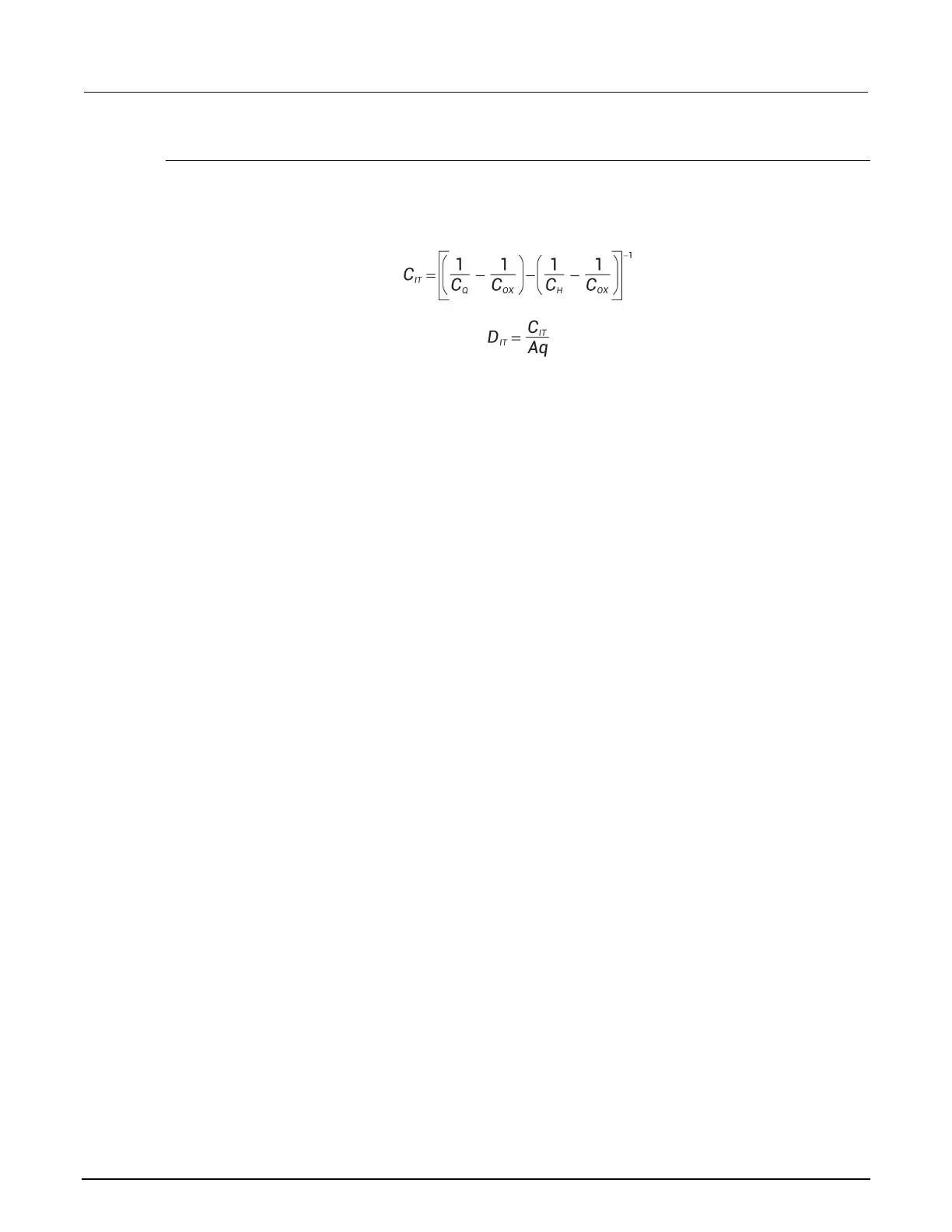D: Using a Model 82 C-V System Model 4200A-SCS Parameter Analyzer
D-56 4200A-901-01 Rev. C / February 2017
Interface trap capacitance CIT and density DIT
The density of interface traps (D
it
) is a function of the silicon orientation and the fabrication process. It
is determined by performing simultaneous high frequency and quasistatic C-V sweeps. The
measurements are extracted mostly from the depletion and inversion regions near mid-band.
Interface trap density is calculated from C
IT
as shown below (Nicollian and Brews 322).
Where:
• C
IT
= interface trap capacitance (F)
• D
IT
= interface trap density (cm
-2
eV
-1
)
• C
Q
= quasistatic capacitance (F)
• C
H
= high-frequency capacitance (F)
• C
OX
= oxide capacitance (F)
• A = gate area (cm
2
)
• q = electron charge (1.60219 × 10
-19
coulombs)
Mobile ion charge concentration
Mobile ion contaminants in an oxide layer can cause problems in the manufacture and performance
of integrated circuits. To measure the concentration of mobile ions in the oxide layer, you can use the
triangular voltage sweep (STVS) method, developed by Keithley Instruments to monitor mobile ion
charge in MOS structures.
You can also use the flatband voltage shift or temperature-bias stress method to measure oxide
charge density.

